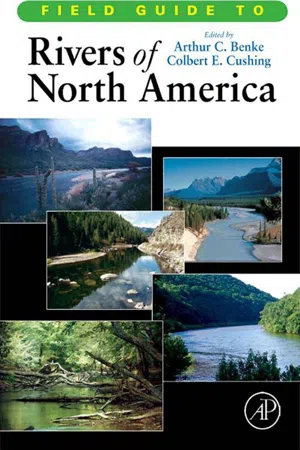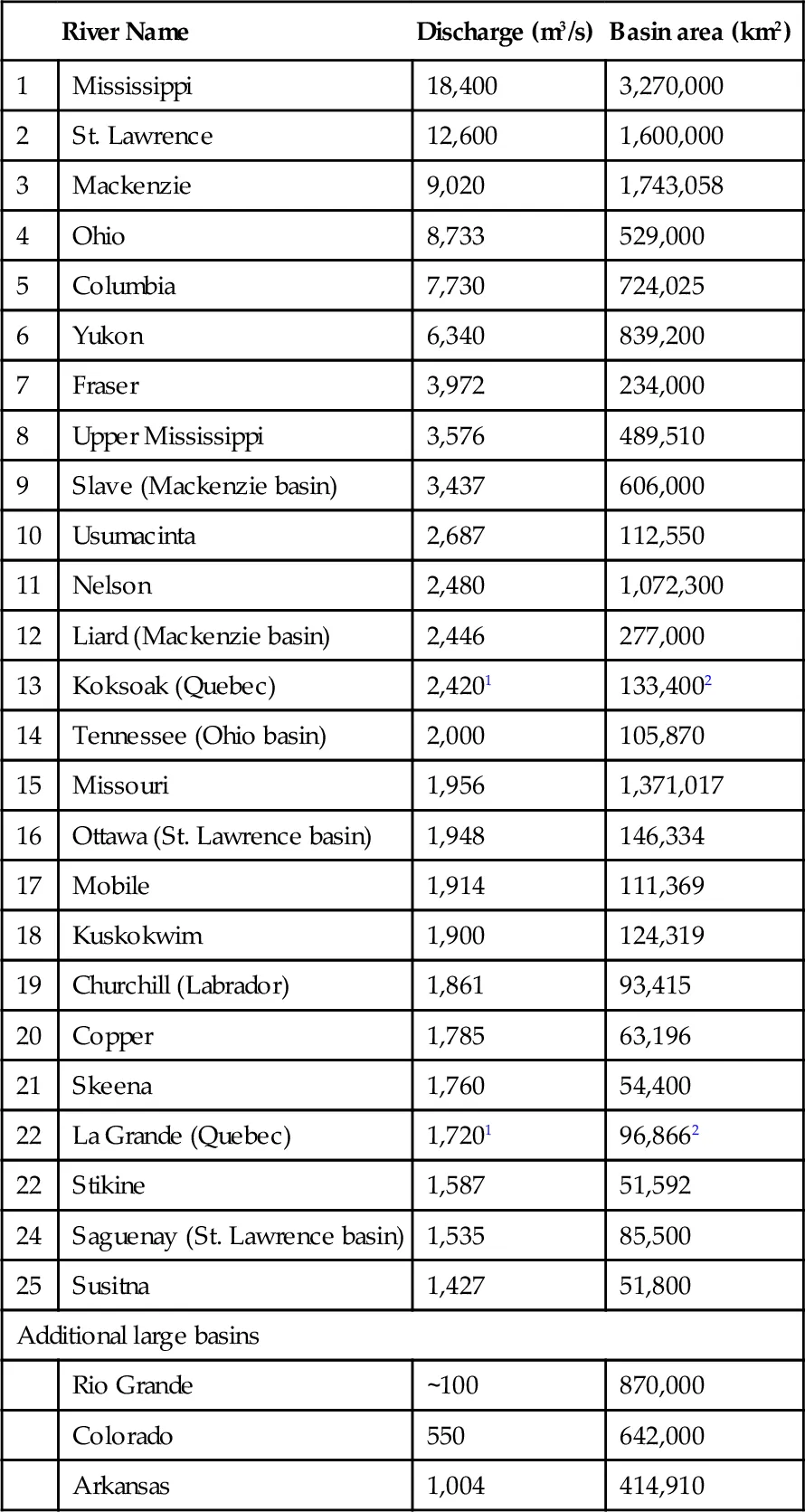
- 472 pages
- English
- ePUB (mobile friendly)
- Available on iOS & Android
Field Guide to Rivers of North America
About This Book
Based on the comprehensive, award-winning book Rivers of North America, the new Field Guide to Rivers of North America describes 200 of North America's most significant rivers in a reader-friendly, concise format. The guide is organized by geographic regions - each section begins with a map showing the relationship of rivers within one territory and a summary of the region's most important elements. Each individual river summary includes a two-page spread with a basin map, a full-color photograph and key river characteristics. The compact format of this guide will be particularly useful to scientists carrying out field research in areas such as field ecology, entomology, botany. It is an easy-to-use reference that can easily be packed away with other scientific gear. Anglers and recreational boating enthusiasts will find a wealth of information on river topography, native and nonnative fish species, as well as average temperatures that will help them plan their next adventure.
The only field guide to cover this broad geographic area. Each river features:
- Color topographic river basin map
- Color photograph
- Precipitation graph
- Vital physical and biological statistics
Frequently asked questions
Information
Introduction
| River Name | Discharge (m3/s) | Basin area (km2) | |
| 1 | Mississippi | 18,400 | 3,270,000 |
| 2 | St. Lawrence | 12,600 | 1,600,000 |
| 3 | Mackenzie | 9,020 | 1,743,058 |
| 4 | Ohio | 8,733 | 529,000 |
| 5 | Columbia | 7,730 | 724,025 |
| 6 | Yukon | 6,340 | 839,200 |
| 7 | Fraser | 3,972 | 234,000 |
| 8 | Upper Mississippi | 3,576 | 489,510 |
| 9 | Slave (Mackenzie basin) | 3,437 | 606,000 |
| 10 | Usumacinta | 2,687 | 112,550 |
| 11 | Nelson | 2,480 | 1,072,300 |
| 12 | Liard (Mackenzie basin) | 2,446 | 277,000 |
| 13 | Koksoak (Quebec) | 2,4201 | 133,4002 |
| 14 | Tennessee (Ohio basin) | 2,000 | 105,870 |
| 15 | Missouri | 1,956 | 1,371,017 |
| 16 | Ottawa (St. Lawrence basin) | 1,948 | 146,334 |
| 17 | Mobile | 1,914 | 111,369 |
| 18 | Kuskokwim | 1,900 | 124,319 |
| 19 | Churchill (Labrador) | 1,861 | 93,415 |
| 20 | Copper | 1,785 | 63,196 |
| 21 | Skeena | 1,760 | 54,400 |
| 22 | La Grande (Quebec) | 1,7201 | 96,8662 |
| 22 | Stikine | 1,587 | 51,592 |
| 24 | Saguenay (St. Lawrence basin) | 1,535 | 85,500 |
| 25 | Susitna | 1,427 | 51,800 |
| Additional large basins | |||
| Rio Grande | ∼100 | 870,000 | |
| Colorado | 550 | 642,000 | |
| Arkansas | 1,004 | 414,910 | |
Table of contents
- Cover image
- Title page
- Table of Contents
- Copyright page
- Preface
- Acknowledgements
- Chapter 1: Introduction
- Chapter 2: Atlantic Coast Rivers of the Northeastern United States
- Chapter 3: Atlantic Coast Rivers of the Southeastern United States
- Chapter 4: Gulf Coast Rivers of the Southeastern United States
- Chapter 5: Gulf Coast Rivers of the Southwestern United States
- Chapter 6: Lower Mississippi River and Its Tributaries
- Chapter 7: Southern Plains Rivers
- Chapter 8: Upper Mississippi River Basin
- Chapter 9: Ohio River Basin
- Chapter 10: Missouri River Basin
- Chapter 11: Colorado River Basin
- Chapter 12: Pacific Coast Rivers of the Coterminous United States
- Chapter 13: Columbia River Basin
- Chapter 14: Great Basin Rivers
- Chapter 15: Fraser River Basin
- Chapter 16: Pacific Coast Rivers of Canada and Alaska
- Chapter 17: Yukon River Basin
- Chapter 18: Mackenzie River Basin
- Chapter 19: Nelson and Churchill River Basins
- Chapter 20: Rivers of Arctic North America
- Chapter 21: Atlantic Coast Rivers of Canada
- Chapter 22: St. Lawrence River Basin
- Chapter 23: Rivers of Mexico
- Index of Rivers
